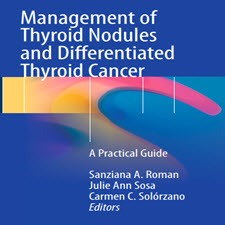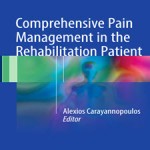Contemporary Management of Jugular Paraganglioma
ABSTRACT
The frst description of paraganglia of the temporal bone was by Stacy R. Guild, an anatomist from Johns Hopkins School of Medicine (Fig. 1.1). In a brief presentation at the American Association of Anatomists at the University of Chicago in April of 1941 entitled “A hitherto unrecognized structure, the Glomus Jugularis, in man,” Guild wrote: “Human temporal bone sections reveal structures in several respects like the carotid body, for which the name glomus jugularis is proposed. Usually they are in the adventitia of the dome of the jugular bulb, immediately below the bony floor of the middle ear and near the ramus tympanicus of the glossopharyngeal nerve…. Each glomus, wherever located, consists of blood vessels of capillary or precapillary caliber with numerous epithelioid cells between vessels. Usually, but not always, the vessels are the more prominent feature. Innervation and blood come from the same trunks that supply the carotid body; namely, glossopharyngeal nerve and ascending pharyngeal artery (through its inferior tympanic branch). Presumably it has functions like the carotid body, perhaps limited to a smaller circulatory region. Suggestion: similar structures may be present along other parts of the peripheral circulatory system”.
INTRODUCTION
Paragangliomas are classifed based on location. The carotid body tumor is the most common paraganglioma, arising at the bifurcation of the common carotid artery in the neck. Paragangliomas arising from the vagus nerve, tympanic plexus, and the wall of the jugular bulb are termed vagal, tympanic, and jugular paragangliomas, respectively. Of these, surgical treatment of the jugular paraganglioma is the most challenging. The diffculty is caused by its deep location and surrounding structures including the carotid artery anteriorly, facial nerve laterally, and vertebral artery and jugular process posteroinferiorly. Furthermore, cranial nerves (CNs) IX to XII pass through the jugular foramen and the hypoglossal canal located inferior to the foramen.
چکیده
توصیف ترفندها از پاراگنگلیا استخوان تمپورال توسط استیسی R. Guild، anatomist از دانشکده پزشکی جان هاپکینز (شکل 1.1) است. در یک گزارش مختصر در انجمن آمریکایی Anatomists در دانشگاه شیکاگو در آوریل 1941 با عنوان “ساختار تاکنون شناخته نشده، Glomus Jugularis در انسان” نوشته شده است: “بخش های استخوان انسانی انسان ساختارها را در چندین نظریه مانند کاروتید نشان می دهد. بدن، که نام glomus jugularis پیشنهاد شده است. معمولا آنها در آستانه گنبد لامپ جگگولا، بلافاصله زیر لکه های استخوانی گوش میانی و در نزدیکی تامپنیک رموس عصب گلنسفارنکس قرار می گیرند. هر گلوموس هر کجا که قرار دارد، شامل رگ های خونی کالیبر مویرگی یا کاپیلار با سلول های اپیتلیویید متعدد بین عروق است. معمولا، اما نه همیشه، عروق برجسته ترین ویژگی است. Innervation و خون از همان تنه هایی است که بدن کاروتید را تامین می کند؛ یعنی عصب گلنسفارنکس و شریان حنجره صعودی (از طریق شاخه زیرین تامپنیک). احتمالا این عملکردها مانند بدن carotid، شاید محدود به یک منطقه گردش خون کوچکتر است. پیشنهاد: سازه های مشابه ممکن است در کنار سایر قسمت های سیستم گردش خون محیطی باشد “.
مقدمه
Paragangliomos بر اساس مکان طبقه بندی می شوند. تومور تومورهای کاروتید رایج ترین پاراگنگلیوما است که در انحنای شریان کاروتید معمول در گردن ایجاد می شود. پاراگنگلیومهای ناشی از عصب واگ، تنگی لنفاوی و دیواره لامپ ژوگولار به ترتیب به ترتیب واگال، تمپانک و پاراژنگلیوم ژوگولار نامیده می شوند. از اینها، درمان جراحی پاراژنگلیوم جگولیک چالش برانگیزترین است. این اختلال ناشی از موقعیت عمیق و ساختارهای اطراف آن است، از جمله قشر کاروتیدی قدام، عصب صورت، و همچنین عروق چشمی مهر و مویرگی و ژوگولار. علاوه بر این، اعصاب جمجمه (CN) IX تا XII از طریق فورامن ژوگولار عبور می کند و کانال هیپوگلوزالی واقع در قسمت پایین تر قرار می گیرد.
Year: 2016
Publisher: SPRINGER
By : George B. Wanna ,Matthew L. Carlson ,James L. Netterville
File Information: English Language/ 265 Page / size: 14.98 MB
سال : 1395
ناشر : SPRINGER
کاری از : B. Wanna، Matthew L. Carlson، James L. Netterville
اطلاعات فایل : زبان انگلیسی / 265 صفحه / حجم : MB 14.98


![Contemporary.Management.of.Jugular.[taliem.ir]](https://taliem.ir/wp-content/uploads/Contemporary.Management.of_.Jugular.taliem.ir_.jpg)
![Endoscopy.in.Obesity.Management.A.Comprehensive.[taliem.ir] Endoscopy.in.Obesity.Management.A.Comprehensive.[taliem.ir]](https://taliem.ir/wp-content/uploads/Endoscopy.in_.Obesity.Management.A.Comprehensive.taliem.ir_.jpg)
![Asset Management Software Implementation[taliem.ir] Asset Management Software Implementation[taliem.ir]](https://taliem.ir/wp-content/uploads/Asset-Management-Software-Implementationtaliem.ir_.jpg)
![Working Capital Management and Profitability of Firms A[taliem.ir] Working Capital Management and Profitability of Firms A[taliem.ir]](https://taliem.ir/wp-content/uploads/Working-Capital-Management-and-Profitability-of-Firms-Ataliem.ir_.jpg)
![Primary.Immunodeficiency.Diseases.Definition.Diagnosis.[taliem.ir] Primary.Immunodeficiency.Diseases.Definition.Diagnosis.[taliem.ir]](https://taliem.ir/wp-content/uploads/Primary.Immunodeficiency.Diseases.Definition.Diagnosis.taliem.ir_.jpg)
![Essentials of[taliem.ir] Essentials of[taliem.ir]](https://taliem.ir/wp-content/uploads/Essentials-oftaliem.ir_-1.jpg)
![Big Data[taliem.ir] Big Data[taliem.ir]](https://taliem.ir/wp-content/uploads/Big-Datataliem.ir_.jpg)
![Management.of.Early.Progressive.Corneal.Ectasia.Accelerated.[taliem.ir] Management.of.Early.Progressive.Corneal.Ectasia.Accelerated.[taliem.ir]](https://taliem.ir/wp-content/uploads/Management.of_.Early_.Progressive.Corneal.Ectasia.Accelerated.taliem.ir_.jpg)



![Ear.Reconstruction.Second.Edition.[taliem.ir]](https://taliem.ir/wp-content/uploads/Ear.Reconstruction.Second.Edition.taliem.ir_-150x150.jpg)
دیدگاه خود را ثبت کنید
تمایل دارید در گفتگو شرکت کنید؟نظری بدهید!